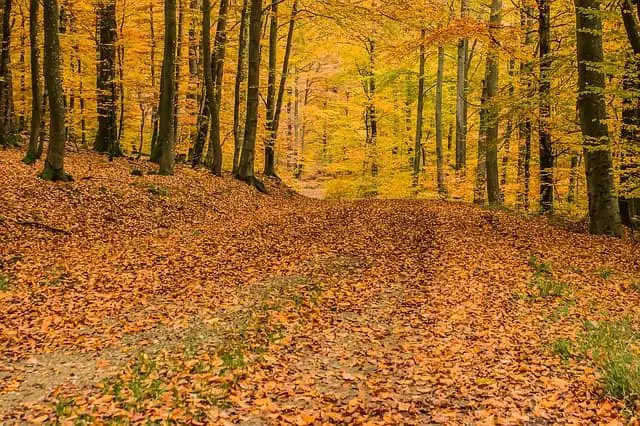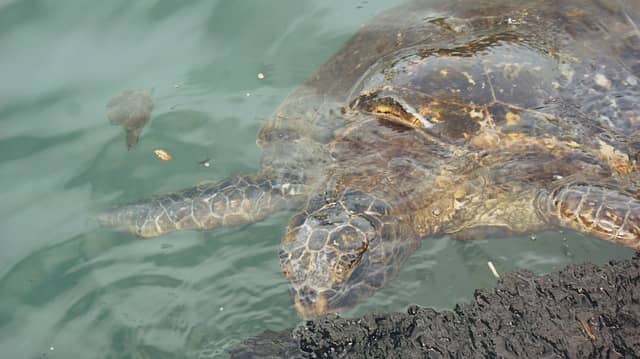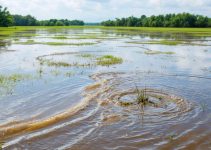What ecosystems are found in the tropics? What are the unique characteristics of each ecosystem? This article lists 17 tropical ecosystems under threat due to the ever-increasing demands of more than 7.8 billion people in the world.
Better knowledge and understanding of the different ecosystems in the tropics will facilitate the sustainable management of these unique assemblages of flora and fauna. This understanding will help environmental management practitioners to better decide on the appropriate approaches to manage, particularly, the finite natural resources.
Introduction
Tropical ecosystems are endowed with qualities determined by its distance from the sun. As ecosystems are influenced by incident light that gives plants the necessary inputs to produce food to start a food chain, tropical ecosystems receive lots of it as these ecosystems lie along or near the equator between the Tropic of Capricorn and the Tropic of Cancer. The temperature averages 18 degrees Centigrade (Kottek, 2006). As a result, diverse ecosystems are found in the region.
Alternating wet and dry seasons produce lush growth of plants forming extensive rainforests, mangrove stands, coconut groves, agroforests, deciduous forests, wetlands, spiny forests, desert, and even alpine habitat exist on the highest mountains.
The highly productive tropical ecosystems serve not only as habitat for a highly diverse mix of wildlife but also as home to about 40% of the world’s human population. Many industrialized countries’ raw material requirements come from natural resource-rich countries in tropical regions.
The significant disparity in the ability to process such raw materials causes resource rich countries to extract more of the raw materials at the expense of the environment. The use of technology to manufacture products that meet human needs and wants speeds up extraction. In some cases, pollutants are produced in the process that threaten natural ecosystems’ sustainability in the tropics.
Better management of tropical ecosystems necessitates a good understanding of its uniqueness: habitat characteristics, dominant life living in those ecosystems, and threats.
The following sections describe the different tropical ecosystems: the tropical rainforest, cloud forest, deciduous forest, spiny forest, lowland forest, grassland, desert, cave, wetland, coral reef, seagrass bed, tidal pool, beach, freshwater swamp, river, lake and pond, and agroecosystem.
Tropical Ecosystems (Terrestrial)
Tropical Rainforest
Tropical rainforests regularly receive rain (70- 100 inches throughout the year a year (Smith, 2019). Plants in this ecosystem follow different layered growth modes, namely emergent, canopy, understory, and those found in the forest floor.
As the word connotes, the emergent layer rises above the dense canopy layer and has mushroom-shaped crowns that receive the greatest amount of sunlight. The canopy layer consists of tightly arranged trees where 90 percent of the rainforest organisms live. Epiphytes like ferns, bromeliads, air plants, and orchids grow on tree trunks with vines that wrap the trees.
The dark understory receives only 2-15% of the sunlight that falls on the canopy. Plants with larger and thinner leaves capture light going through the canopy thrive in these parts. A thin layer of decaying or decayed fallen leaves, seeds, fruits, twigs, and branches characterize the forest floor. Most nutrients are found in the trees, and animals as organic matter tend to be absorbed readily.
The greatest diversity of flowering plants are found in the tropical rainforest. High plant diversity means high animal diversity.
Threats to the tropical rainforest include logging, climate change, mining, forest fire, deforestation, and invasive species.
Cloud Forest
Cloud level forests are cooler than lowland forests. These ecosystems thrive on high mountains in the tropics and experience very different environmental conditions from the lowlands. Cloud forests are shrouded in mist and fog that allow the growth of short trees with high stem density. Trees look stunted with compact and dense crowns, small, thick, and hard leaves. It is also grown with mosses, ferns, and epiphytes.
Threats to cloud forests include habitat loss and degradation by human encroachment.
Deciduous Forest
Deciduous forests receive irregular rainfall where trees may drop their leaves during the dry season. Dominant species include deciduous trees, lichens, moss, ferns, wildflowers, shrubs, bamboo, and teak. This ecosystem is prone to forest fire, climate change, and mining.

Spiny Forest
The spiny forest has a high level of endemicity owing to the unique combination of temperature and rainfall. The dense growth of shrubs, bushes, or small trees that form thickets characterizes this ecosystem. The plants have extended roots and thorns.
Threats to the spiny forest include small-scale but widespread exploitation of the forest for firewood and charcoal. Selective logging also threatens its integrity.
Lowland Forest
The lowland forest usually has taller and more diverse trees compared to those found in the higher elevations. Fruiting trees are abundant that offer food to a diverse array of animals, including large mammals.
As the lowland forest lies close to human civilization, much of it is under pressure. Logging, forest fire, deforestation, invasive species, slash-and-burn farming, among others, threaten its continued existence.
Grassland
Tropical grasslands have rainfall levels of 35 to 60 inches annually. Grasses dotted by several trees dominate grasslands. Grazing and large carnivorous mammals live in the grasslands. These include elephants, cheetahs, gazelles, lions, and tigers. Smaller animals include rabbits, birds, lizards, and snakes.
Threats to grassland ecosystems include habitat alteration, hunting, inappropriate grazing, burning practices, invasion of exotic species, and unsustainable agricultural practices.
Desert
Deserts are arid, humid ecosystems where extremes of temperature are experienced. While this ecosystem may look empty and dry, various non-mammalian vertebrates such as reptiles exist.
Deserts, just like the other ecosystems, are threatened by global warming, drought, wildfire, and grazing.
Cave
The caves’ lack of light renders it dependent on its connection to the outside world and internal microbial production. Animals that can survive in caves include fish, crayfish, shrimps, amphipods, millipedes, snakes, and other animals adapted to cave life.
Threats to cave ecosystems include flooding and siltation, organic enrichment, mining, erosion, modification due to tourism, wildlife disturbance, the introduction of exotic species, and climate change.
Tropical Ecosystems (Coastal and Marine)
Wetland
In general, wetlands consist of ecosystems with sustained water saturation in the upper parts of the substrate. Animals living in wetlands include crocodiles, snakes, turtles, invertebrates such as shrimp, snails, mosquitoes, and dragonflies. Wetlands include mangrove swamps characterized by salt-tolerant trees, shrubs, and other plants growing in brackish to saline tidal waters.
The removal of vegetation, overgrazing, drainage for agriculture, introduction of invasive species, roads, dikes, and pollution can jeopardize wetlands.
Coral Reef
Coral reef ecosystems consist of rocky limestone (Calcium carbonate) structures built by reef-building corals at shallow (~30 feet) depths. These ecosystems extensively cover the coastal areas and serve as a source of ready food for the coastal communities. Animals living in coral reefs are highly diverse. Reef fishes, algae, lobsters, clams, seahorses, sponges, and sea turtles live and feed in these areas.
Coral reef ecosystems are susceptible to global warming, poison and dynamite fishing, pollution, coastal development, quarrying, dredging, anchoring and grounding, and corals’ removal.

Seagrass bed
Seagrass beds consist of long, green, grass-like leaved plant communities. Threats to this rich ecosystem include high nutrient levels due to the coastal areas’ human pollution, suspended sediments, boating, dredging, and construction activities.
Tidal pool
The tidal pools are areas with wave-battered depressions in exposed bedrock. Seaweeds and invertebrates such as sea anemones, starfish, crabs, mussels, and chitons are found in this ecosystem. Trampling, pollution, trash, and oil spills imperil its integrity.
Beach
Beaches are sandy ecosystems bounding the land and the sea. Animals living and reproducing in these areas include sea turtles, sea birds, isopods, marine mammals, and crustaceans. Sea-level rise, construction, pollution, and boat landings threaten beach existence.
Tropical Ecosystems (Freshwater)
Freshwater swamp
Freshwater swamps are land areas that are permanently saturated or filled with water. Some are former lakes where sediments gradually built up. Trees that tolerate continuous submersion in water live in the swamps. These ecosystems are threatened by deforestation, siltation, and conversion into human habitation.
River
Rivers form when water in the high elevations of the land drain along furrows or grooves of land that serve as river beds. Water is in constant motion, the speed of which is determined by the land’s slope, the size and shape of the bed, and the amount of water available.
Notable animals living in freshwater habitats such as rivers include snails, worms, turtles, frogs, birds, mollusks, otters, snakes, and many kinds of invertebrates like the ubiquitous grasshoppers, dragonflies, mosquitoes, and spiders.
Many human civilizations are built around rivers and streams to access drinking water, irrigation, food, and transportation. Because of this proximity, rivers are prone to human pollution in the form of sewage, modification, or conversion into dams to generate electricity, agricultural runoff, and invasive species.
Lake and Pond
Freshwater lake ecosystems are confined bodies of water that vary greatly in size and depth. If these are small, they are usually referred to as ponds. They may exist in many elevations, even below sea level. Water in the lakes originates from rains, nearby streams, and groundwater seepage.
Lakes are habitat to a diversity of life, including freshwater crocodiles, birds, mollusks, otters, snakes, turtles, frogs, and many different insects. Fish, crayfish, life stages of frogs like tadpoles also live in lakes.
The major threats to lakes include acid rain, agricultural runoff, infrastructure development, and general siltation. When soil particles have already built up, lakes become extinct and become bogs.
Man-Made Ecosystem
Agroecosystem
Agroecosystems are human-made ecosystems with animal and plant diversity determined by human design. The main goal of these ecosystems is to provide a steady supply of food to humans. Beneficial organisms are introduced in such ecosystems to improve food production.
Threats to agroecosystems include soil degradation, water and wind erosion, compaction, salinization, nutrient depletion and decline in fertility, pollution, invasive species, and climate change.
References
Articles
Kottek, M., Grieser, J., Beck, C., Rudolf, B., & Rubel, F. (2006). World map of the Köppen-Geiger climate classification updated. Meteorologische Zeitschrift, 15(3), 259-263.
Rundel, P. W. (2009). Vegetation in the Mekong basin. In The Mekong (pp. 143-160). Academic Press.
Websites
https://www.aims.gov.au/ https://www.epa.gov/wetlands/mangrove-swamps https://rainforests.mongabay.com/ http://www.riverthreat.nettic%20wildlife%20species%20at%20risk. https://www.nap.edu/read/4766/chapter/7 https://www.nationalgeographic.com/environment/habitats/desert-threats/ https://oceanservice.noaa.gov/facts/coral_species.html http://ocean.si.edu/ocean-life/plants-algae/seagrass-and-seagrass-beds http://outerisland.org/ http://www-personal.umd.umich.edu/~fdolins/berenty/aboutberenty/flora/Forest-Spiny/index.html https://www.worldwildlife.org/biomes/tropical-and-subtropical-grasslands-savannas-and-shrublands https://socratic.org/questions/what-is-the-human-impact-on-the-intertidal-zone http://cas.umt.edu/watershedclinic/links/clarkfork/wetlands/threatstowetlands.htm https://science.jrank.org/pages/3793/Lake-Lake-threats.html https://www.sciencedirect.com/topics/agricultural-and-biological-sciences/agroecosystems
https://staff.concord.org/~btinker/GL/web/water/ecosystem_river_stream.html https://www.uq.edu.au/news/article/2012/03/uq-scientists-warn-worlds-cloud-forests-are-risk-of-destruction https://www.theswimguide.org/2015/04/29/beach-wildlife/ https://www.worldatlas.com/articles/which-are-the-biggest-threats-to-sea-beaches-across-the-world.html
© 2020 September 30 P. A. Regoniel

